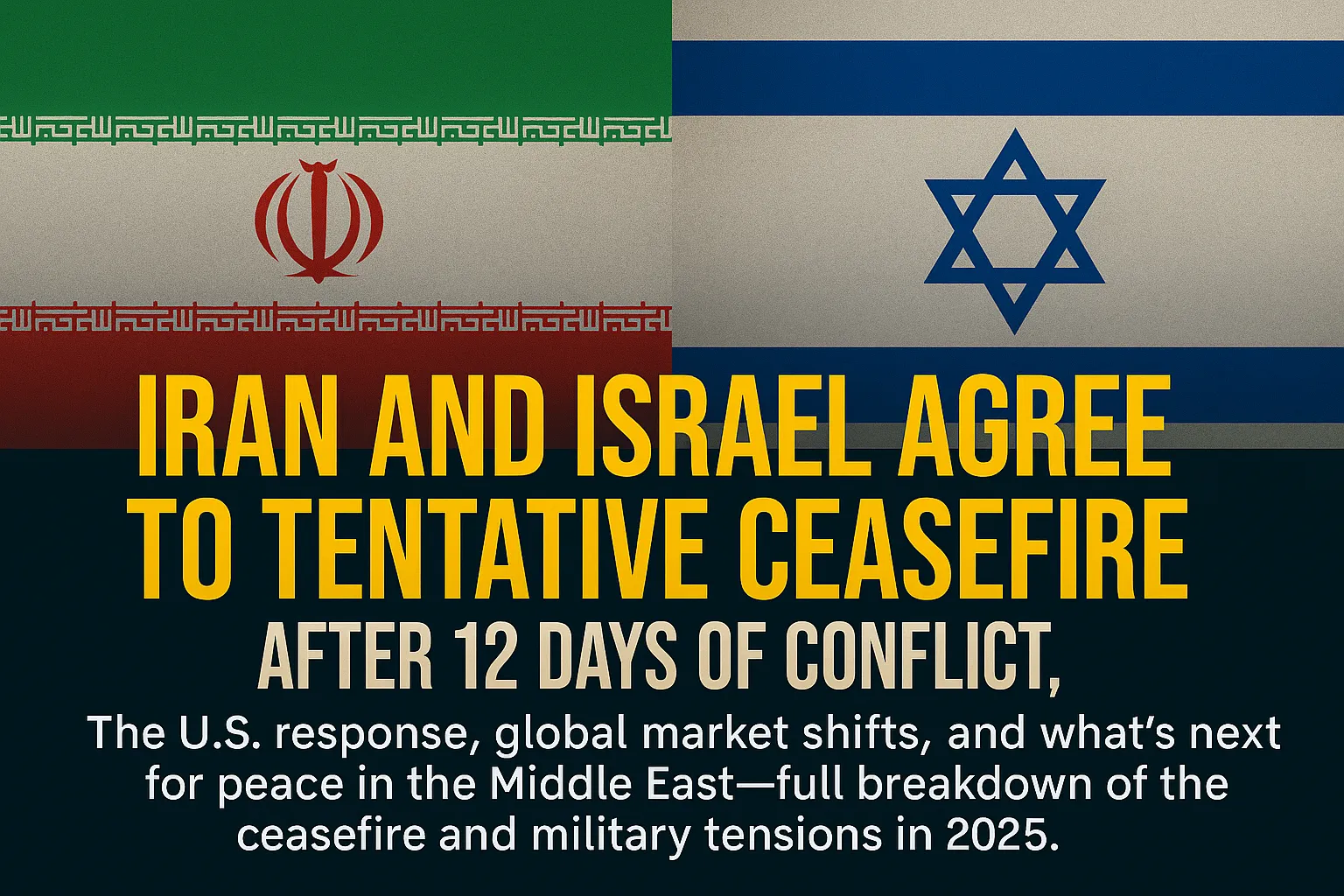Iran-Israel Ceasefire 2025: What It Means for U.S. and Middle East
🇮🇷🇮🇱 Ceasefire Announced Between Iran and Israel After 12 Days of Escalation
U.S. Confirms No Direct Strikes on Its Bases; Global Markets React
Tehran, Tel Aviv, Washington – After nearly two weeks of rising tensions and missile exchanges, Iran and Israel have agreed to a temporary ceasefire. The announcement came late Tuesday following backchannel diplomatic efforts led by Qatar and monitored by the United Nations and U.S. officials.
The 12-day conflict, which included missile launches near the Strait of Hormuz and reports of attempted strikes on U.S. military installations such as Al Udeid Air Base in Qatar, had stirred fears of a broader war in the Middle East. The U.S. Department of Defense confirmed that no American personnel were harmed in the recent engagements.
Trump Weighs In from Truth Social; Biden Administration Cautiously Optimistic
Former President Donald Trump posted on Truth Social calling the ceasefire “a step in the right direction but only if it holds.” Meanwhile, White House Press Secretary stated the U.S. will “continue to monitor compliance closely,” especially as reports suggest Iran had earlier violated previous ceasefire terms.
According to Reuters and AP, Iran’s Seyed Abbas Araghchi confirmed “Iran’s commitment to de-escalation,” but warned any future Israeli provocation “would void the ceasefire immediately.”
What Is a Ceasefire and Why It Matters in 2025
A ceasefire is a formal or informal agreement between conflicting parties to stop fighting. In the volatile Iran-Israel dynamic, a ceasefire serves as a fragile pause, not a permanent peace deal. Analysts say this agreement is crucial to avoid wider conflict involving the U.S. and other nuclear-capable nations.
📉 Markets React to Middle East Peace Signals
Crude oil prices dropped slightly following the news, while stock market futures showed mixed reactions. The S&P 500 futures rose 0.4%, signaling cautious optimism. Energy traders remain alert amid potential disruptions in oil transport through the Strait of Hormuz.
What’s Next for the Region?
Despite the current ceasefire, threats remain. Intelligence reports hint at sleeper cells and proxy networks still active across the region. Both Israeli and Iranian defense ministries have not fully stood down military alert levels.
For now, the world watches—and waits. Stay informed with updates on the ceasefire, Iran’s missile capabilities, and U.S. military positioning in the Middle East.
Follow more on SoftMagazines.com for the latest verified updates on Middle East peace developments and U.S. foreign policy.

